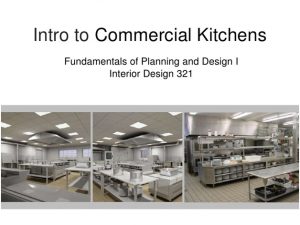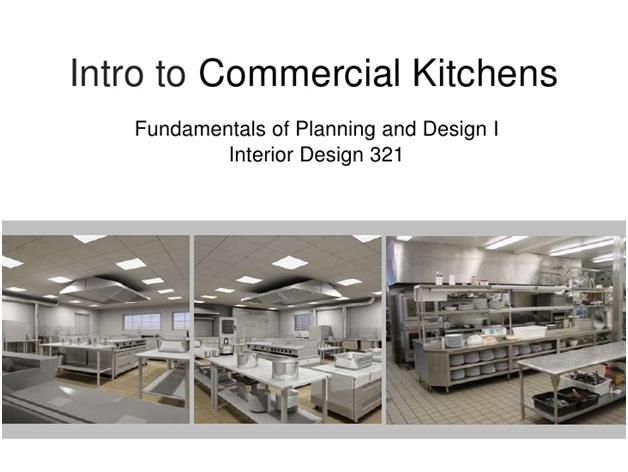
Design considerations for commercial kitchens
Before you commence the installation or upgrading of your commercial kitchen there are a number of important points to consider. Careful planning will ensure that the end result is a commercial kitchen suited to you and your staff and will be an efficient work space even at the busiest times in your service.
Work flow
Designated work areas for each set of tasks will be needed to ensure that there is a smooth work flow through the kitchen. As well as promoting efficiency, a planning a logical sequence will enable staff to work cooperatively and provide better service. It is also important from a safety point of view, as a good work flow will prevent people from having to carry hot pans or sharp knives around the kitchen, both activities that have been identified by the Health and Safety Executive as common risks. This is basically common sense, such as ensuring you have a set down area adjacent to deep fat fryers.
Wall and floor finishes
The major considerations here are safety and hygiene. Floor finishes should be non-slip, as slips and trips are common risks in catering. The ease of cleaning both wall and floor finishes should also be considered, as your kitchen will need to be kept in a hygienic condition at all times.
What equipment will be needed
Make a list of all the catering equipment you will need in your kitchen. Check whether a specialist ventilation system will be needed as this would need to be installed first as well as appropriate air conditioning like that supplied by Air conditioning Belfast company http://www.envirogroup-ni.co.uk/air-conditioning-installation/air-conditioning.html
The catering equipment you choose should also be easy to keep clean and to service in the event of a breakdown. Many online suppliers offer next day delivery which can be an important consideration when you need to keep your kitchen running efficiently. Although you will have dishwashers, you will also need at least two sinks apart from the ones for food preparation and hand washing to use for washing dishes should your dishwasher break down.
Storage
Dry goods storage should be located conveniently near where the goods will be used. For frozen and chilled storage, consider under counter units positioned near the point of use. Items such as commercial bottle coolers can be positioned close to the service area for convenience.
Environmental considerations
Choosing energy efficient equipment is important, especially with rising fuel costs. The volume of water used in a commercial kitchen can also be reduced by choosing ‘green’ equipment. Recycling is also important and your local council will advise on this. The Food Standards Agency provides a search facility so you can contact your local authority for advice on the design and operation of your kitchen.
There are many other aspects of kitchen design such as lighting and ventilation to consider. These both impact on the wellbeing and safety of staff. Kitchen design is often a compromise and much will depend on the space available and the constraints of your budget. However, time spent planning will always pay off in terms of the efficiency of your completed kitchen.

Leave a reply